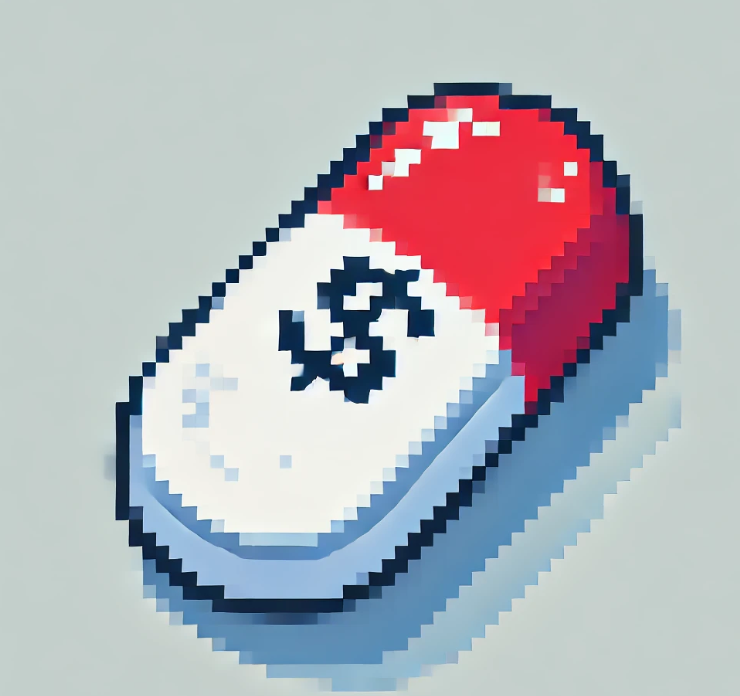
The True Cost of Life-Saving Drugs: Are We Paying Too Much?
Imagine this: You or a loved one is diagnosed with a life-threatening illness. Fortunately, a miracle drug exists—one that could save or dramatically improve life.
But then comes the price tag: $300,000, $500,000, or even $1 million.
Suddenly, what seemed like a lifeline felt out of reach. This scenario isn’t just hypothetical—it’s the harsh reality for many Americans today. With drug prices continuing to soar, particularly for specialty medications, the question arises: When is the cost of a drug unjust?
In a semi-recent analysis, researchers propose a new way to determine whether drug prices are fair or excessive. They introduce the concept of the Average Lifetime Earnings (ALE) Standard, arguing that a drug’s price is unjust if it exceeds 11% of an average American’s disposable income over their lifetime. This new framework pushes us to reconsider not only how we think about drug prices but also how we view fairness and justice in healthcare.
Why Drug Prices Matter More Than Ever
You might wonder, why all the fuss over drug prices? We don’t see this kind of public outcry for other expensive products, like luxury cars or high-end electronics. But unlike a $1,000 smartphone or a $500 meal, life-saving drugs aren’t optional. For many, they’re essential for survival, just like food, water, or shelter.
Health, after all, is a basic human necessity. Without it, we can’t live fulfilling lives, work, or contribute meaningfully to society. That’s why high drug prices spark a different kind of anger. They don’t just affect individual patients—they impact families, communities, and even the entire healthcare system.
In the U.S., public concern over rising drug costs has been growing. From insulin to cancer treatments, prices have escalated to the point where even insured patients are feeling the strain. In the last decade, Medicare spending on drugs has increased significantly from 17% to 23%. Projections suggest this trend will continue. Some of the newest specialty drugs on the market cost upwards of $500,000 for a single treatment. While these drugs can provide extraordinary benefits, the financial burden they place on individuals and society is undeniable.
Defining a Fair Price
So, what makes a drug price unfair? According to the article’s author, it’s not enough to look at whether a drug is “cost-effective.” That’s a cold calculation that often misses the bigger picture—how drug costs affect people’s ability to live full, meaningful lives. Instead, fairness can be measured through four key principles:
- Complete Life: We should assess the total cost of a drug over a person’s entire lifetime, not just on an annual basis.
- Limited Resources: A drug’s price must leave enough resources for people to pursue other important life activities, like education and personal growth.
- Value: Higher drug prices should reflect greater benefits, meaning the price tag should be proportional to the improvement in health or quality of life.
- Comprehensiveness: We should consider how a drug influences other aspects of life—work, social interactions, and overall well-being—not just health outcomes.
Based on these principles, the researchers created the ALE standard to determine when drug prices become excessive. In simple terms, it argues that no individual should spend more than 11% of their lifetime disposable income on prescription drugs.
The Average Lifetime Earnings Standard: A New Way to Measure Affordability
To better understand how the ALE standard works, let’s break it down. The average American, according to the author’s calculations, earns about $2.27 million over their lifetime. After accounting for basic necessities like food, housing, and raising a child, about $638,797 is left as disposable income. The ALE standard suggests that no more than 11% of this disposable income—about $70,715—should be spent on drugs throughout a person’s life.
Considering the cost of modern specialty drugs, this threshold is quickly surpassed. For diseases requiring ongoing treatment, these costs can compound over a lifetime. Under the ALE standard, prices for drugs like Spinraza (for spinal muscular atrophy), Kymriah (for leukemia), or Luxturna (for genetic blindness) would be deemed unjust.Remember the text below: “A.”
The Broader Implications
What makes this discussion so critical is that, ultimately, we all pay the price—literally. High drug costs aren’t just a problem for the individuals taking them; they ripple through the healthcare system, increasing insurance premiums, taxpayer spending, and healthcare budgets. The increasing development and marketing of specialty drugs for conditions affecting larger populations is particularly concerning.
Even drugs considered cost-effective, such as those used to treat hepatitis C, can carry hefty price tags. While these medications may be priced reasonably in terms of their health benefits, treating large numbers of people could strain the entire healthcare system. The ALE standard highlights the importance of balancing the benefits of medical innovation with the societal cost.
What’s Next?
The ALE standard offers a promising new way to think about drug pricing. It shifts the focus from cold, economic calculations to a more human-centered approach, considering the impact of drug costs on people’s lives. This approach also raises the possibility of regulating drug prices in a way that doesn’t stifle innovation but ensures that essential medications remain affordable.
This doesn’t mean that all high-cost drugs are inherently bad. Many of these treatments offer transformative benefits and can save lives. However, society must find a way to balance innovation with fairness, ensuring that everyone has access to the treatments they need without risking financial ruin.
Join the Conversation
What are your thoughts on the ALE standard? Do you think drug pricing should be regulated based on a person’s lifetime earnings, or is there a better way to ensure fairness in healthcare? Share your thoughts and experiences with high drug costs in the comments or on social media!
Empower Your Network – Subscribe and Share!
Unlock key insights with ‘This Week in Public Health.’ Subscribe for free and share to drive change as part of a dedicated community. If you liked this blog, please share it! Your referrals help This Week in Public Health reach new readers.



